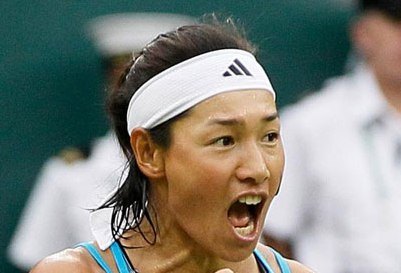The date: June 22nd, 2011. The place: Wimbledon.
40 year old Date- Krumm is battling 31 year old Venus Williams. They were evenly matched : One set all and then 6-6 in the third set. Said the commentator: “ The crowd is cheering for Date-Krumm because she’s not afraid to show her emotions. Venus is hitting so powerfully that you wonder how her opponent would handle it.
40 year old Date- Krumm is battling 31 year old Venus Williams. They were evenly matched : One set all and then 6-6 in the third set. Said the commentator: “ The crowd is cheering for Date-Krumm because she’s not afraid to show her emotions. Venus is hitting so powerfully that you wonder how her opponent would handle it.
But then Date-Krumm would absorb it and return it with interest (!)”. Finally Venus overpowered her opponent and won the last set 8-6. But that’s another matter.
The Question:
If a brand were to be like Date-Krumm, unafraid to be honest, showing its warts and all, would it be more endearing? Would consumers relate better to a brand with foibles and character than an unnaturally ‘perfect’ brand? This year again, when the girlish Lisicki (whose emotions were on full display) beat that shrieking ice-maiden Sharapova, not too many people killed themselves. What could be likeable about a narcissistic cyborg that can turn you into an icicle at 10 paces
Years ago when David Ogilvy had reviewed detergent ads in India, he exclaimed that most of the models looked like princesses. He showed us an example of a detergent ad from France that showed an old washerwoman complete with wrinkles and even a faint moustache.
Happily I notice that Indian brands and advertising are increasingly using people that we can relate to. Whatever happened to the fear that if the consumer did not see a gorgeous Apsara or an Adonis promoting a brand , then the brand was a goner. Some soft drink brands are already dumping megastars and engaging average looking Joes and Janes.
Just the fall-out from smaller budgets ? Not really. It seems to be coming from a deeper understanding of the changing consumer. We are informed that ‘the new masculinity is about changing the status quo and not about brawn’ (sic). ‘It’s about moving ahead with self belief’, (sic).
Planners appear to be delving deep into research unearthing insights , engaging with consumers and starting conversations.Clearly we are talking about empowering individuals rather than making them ape Superstars.
Ok, now let me bowl you a ‘doosra’ - Speaking of empowerment, remember the time Nike changed its slogan from ‘Just do it’ to ‘I can’ ? It was extremely short-lived. Evidently the Nike customer likes to be urged to perform. Self-belief and self-confidence didn’t seem to get off the starter’s block. Was the experiment pre-mature? Was it a case of ‘another time, another place’? I leave it to you dear reader to figure it out.
(Mohan Menon)
The Question:
If a brand were to be like Date-Krumm, unafraid to be honest, showing its warts and all, would it be more endearing? Would consumers relate better to a brand with foibles and character than an unnaturally ‘perfect’ brand? This year again, when the girlish Lisicki (whose emotions were on full display) beat that shrieking ice-maiden Sharapova, not too many people killed themselves. What could be likeable about a narcissistic cyborg that can turn you into an icicle at 10 paces
Years ago when David Ogilvy had reviewed detergent ads in India, he exclaimed that most of the models looked like princesses. He showed us an example of a detergent ad from France that showed an old washerwoman complete with wrinkles and even a faint moustache.
Happily I notice that Indian brands and advertising are increasingly using people that we can relate to. Whatever happened to the fear that if the consumer did not see a gorgeous Apsara or an Adonis promoting a brand , then the brand was a goner. Some soft drink brands are already dumping megastars and engaging average looking Joes and Janes.
Just the fall-out from smaller budgets ? Not really. It seems to be coming from a deeper understanding of the changing consumer. We are informed that ‘the new masculinity is about changing the status quo and not about brawn’ (sic). ‘It’s about moving ahead with self belief’, (sic).
Planners appear to be delving deep into research unearthing insights , engaging with consumers and starting conversations.Clearly we are talking about empowering individuals rather than making them ape Superstars.
Ok, now let me bowl you a ‘doosra’ - Speaking of empowerment, remember the time Nike changed its slogan from ‘Just do it’ to ‘I can’ ? It was extremely short-lived. Evidently the Nike customer likes to be urged to perform. Self-belief and self-confidence didn’t seem to get off the starter’s block. Was the experiment pre-mature? Was it a case of ‘another time, another place’? I leave it to you dear reader to figure it out.
(Mohan Menon)


